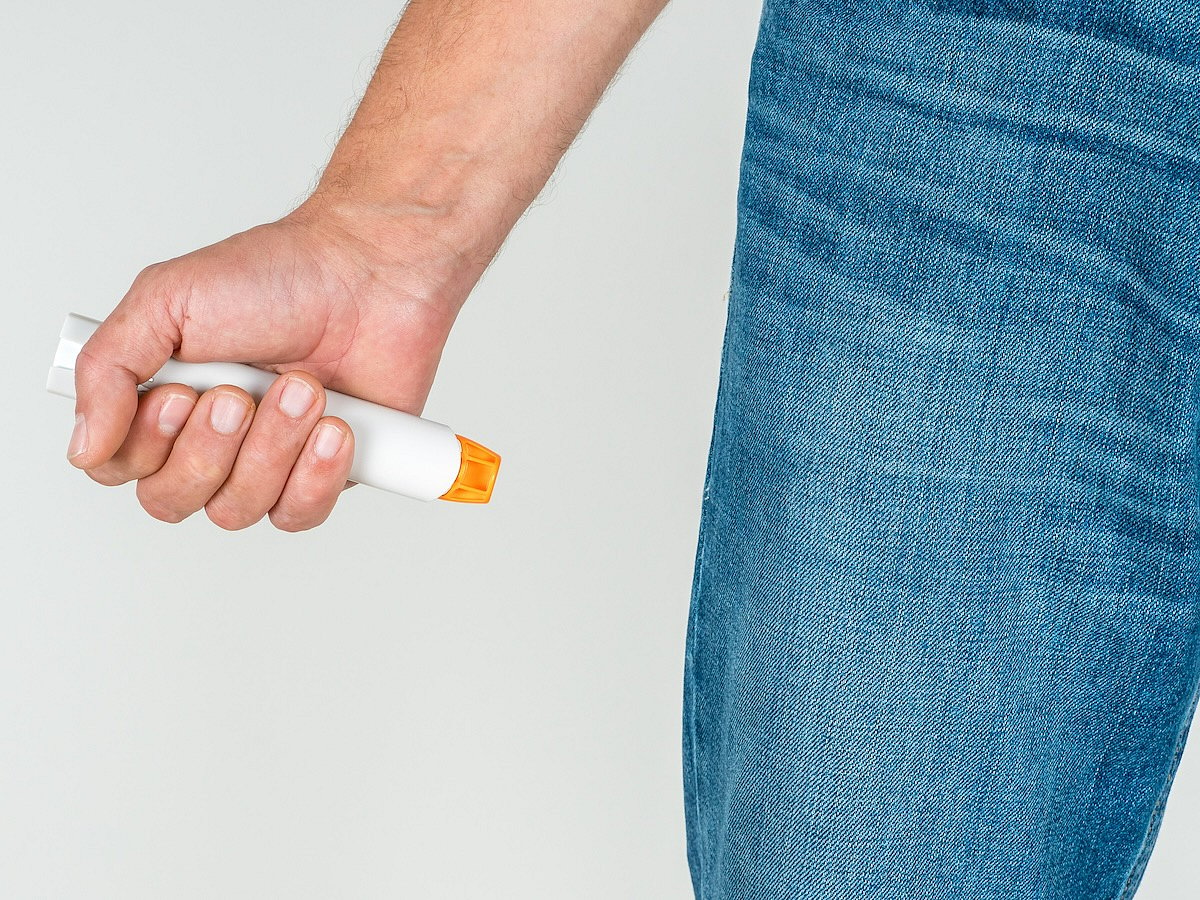Get Healthy!

- Todd A. Mahr, MD, Executive Medical Director, American College Of Allergy, Asthma And Immunology
- Posted October 8, 2024
Epinephrine: Tips to the 'EpiPen' Ingredient and How It Treats Anaphylaxis
The recent approval of a new epinephrine nasal spray gives patients a powerful new way to keep life-threatening allergic reactions at bay.
But that doesn't mean folks no longer have to worry about anaphylaxis.
According to the American College of Allergy, Asthma and Immunology, anaphylaxis can occur within minutes of exposure to an allergen. Common triggers include certain foods, medications, insect stings and latex, though it can also occur due to exercise or unknown causes.
The symptoms of anaphylaxis escalate rapidly, involving multiple body systems and requiring immediate medical intervention. Epinephrine, also known as adrenaline, is the first-line treatment for anaphylaxis.
Anaphylaxis occurs when the immune system overreacts to a harmless substance by releasing chemicals that trigger inflammation and swelling throughout the body. Key symptoms of anaphylaxis include:
Hives, flushing or itching
Swelling of the lips, throat or tongue (angioedema)
Wheezing or difficulty breathing
Drop in blood pressure, leading to dizziness or fainting
Gastrointestinal symptoms such as nausea, vomiting or diarrhea
In severe cases, loss of consciousness
The rapid onset of symptoms and the involvement of the cardiovascular, respiratory and gastrointestinal systems make anaphylaxis a medical emergency. The speed at which anaphylaxis progresses means that immediate action is crucial. Every minute counts in preventing more severe complications, such as shock, cardiac arrest or death.
Epinephrine -- given via an auto injector or by nasal spray -- is the only medication that can act quickly enough to reverse the symptoms in time.
Epinephrine is the most effective treatment for anaphylaxis because it counteracts the severe allergic response on multiple fronts. Delay in administration of epinephrine is associated with poor outcomes and fatalities. And patients treated early with epinephrine are less likely to be hospitalized.
In the United States, multiple brands of FDA-approved epinephrine auto-injectors are available. Injectors vary in several ways, including available doses, recommended weight class of patients, device design, needle length, pressure needed for device activation and cost.
Despite the recent approval of a nasal epinephrine spray, not all insurance plans cover it and the nasal spray may not be suitable for everyone who now carries an injector.
But it could be a godsend for some.
In a survey of caregivers of pediatric patients with food allergies, 4% of the caregivers who did not use an injector identified “Child scared or nervous about needle” as the reason for non-use.
However, the most common reason for lack of injector use was that the “Symptoms did not seem severe enough” (48%). In 1,209 parents of peanut-allergic children who had been prescribed an injector, 56% reported being afraid or somewhat afraid to use it. Of those parents, 35% cited hurting the child. Parents were significantly more likely to express fear if their child had no injector training, if they did not find the injector easy to use or if their child had never had a severe reaction.
Antihistamines and corticosteroids are sometimes used to manage allergic reactions, but they are not fast-acting and do not reverse the underlying mechanisms of anaphylaxis. Only epinephrine can do that.
Despite the recognized effectiveness of epinephrine, there is still a lack of awareness about its timely use. Many people do not fully understand the severity of anaphylaxis or the need for immediate epinephrine administration. Some individuals may hesitate to use epinephrine, fearing side effects or assuming that their reaction will not escalate. However, epinephrine is considered safe and effective, with benefits far outweighing any potential risks. Education is essential for both individuals with allergies and the public.
Limited access to epinephrine for treatment of anaphylaxis can put some patients at risk. Advocacy for affordable and accessible treatment is key in reducing preventable deaths.
The importance of carrying and knowing how to use an epinephrine auto-injector or nasal spray cannot be overstated. Public awareness, proper education and accessible healthcare resources are crucial in preventing deaths due to anaphylaxis, ensuring that individuals at risk are always prepared for an emergency.
SOURCE: American College of Allergy, Asthma and Immunology, October 2024





